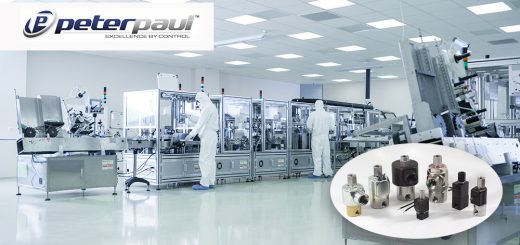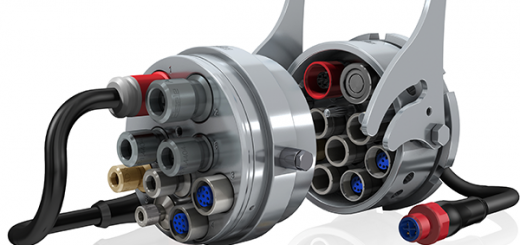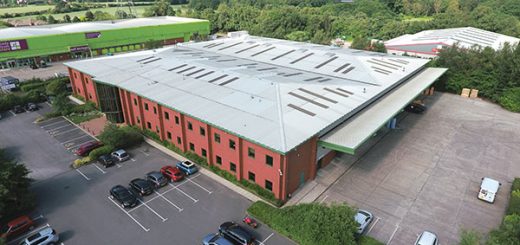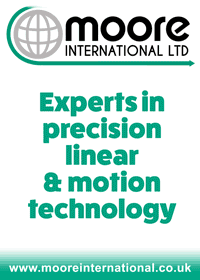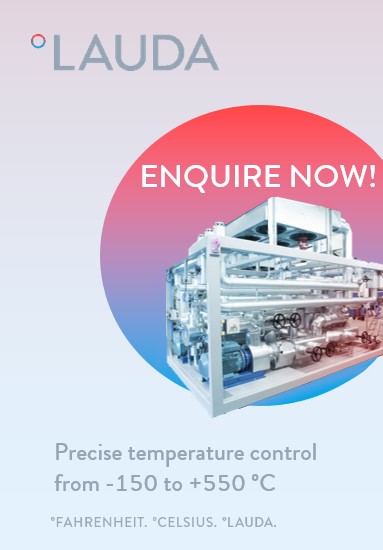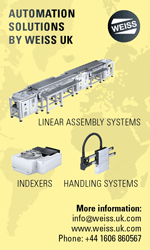Laser distance sensors for fast and accurate measurement results up to 500 m Clear view into the distance
There are many applications where large distances need to be measured as quickly as possible and with a high degree of accuracy. Typical applications range from rack feeders and automatic storage and retrieval systems (ASRS) in distribution centres, fill‑level controls in large tanks and silos through to mechanical engineering, e.g. in systems for processing metal tubes or in machinery used for cutting beams or planks to length. These are the areas of use for laser distance sensors that are able to measure distances from 0.05 m to 500 m quickly and with millimetre precision.
Laser distance sensors usually measure either time of flight or phase shift. With measurement of the time of flight, a short pulse of light is emitted. The pulse propagation time, i.e. the time that the light beam needs to travel from the source to a reflector and back again to the source, is then used to determine the distance. This method is fast, but often not precise enough for challenging time measurements. With distances of several hundred metres, the resolution is normally only in the centimetre range. Alternatively, the phase shift of the reflected laser beam relative to the emitted beam can be evaluated instead. The phase shift is distance‑dependent, i.e. can be used to determine the distance travelled. This measurement method is considerably more accurate, but the more complex evaluation means that it is not as fast as pure time of flight measurement.
Combined measurement method: fast and accurate
The Swiss sensor specialists at Dimetix AG take a different approach. In their long‑distance laser sensors (Fig. 1), they basically combine the benefits of both measurement methods by evaluating both time of flight and phase shift (Fig. 2). To achieve a high measurement speed, the method uses high‑frequency modulation of the laser amplitude and evaluates the phase position and the spacing of these modulated high‑frequency signals (bursts). To this end, the laser beam is amplitude‑modulated at short intervals. This enables the distance‑dependent shift in propagation time of the individual pulse bundles as well as the phase shift of the individual waves within the modulated bundles to be measured extremely quickly. The sensors therefore measure more quickly than would otherwise be possible, and also return precise values even in the case of large distances.
The D-Series laser distance sensors are suitable for distances of 0.05 m to 500 m and measure with an accuracy of +/- 1 mm with a repeatability of +/- 0.3 mm. They usually use orange reflective foil as the reflector. At distances up to 100 m, the named accuracy values also apply to natural surfaces. The devices can deliver reliable measurement results even with black target surfaces or in direct sunlight if used outdoors. Their measurement accuracy is specified with a statistical certainty of 95.4 % (as defined by ISO 1938‑2015). This is equivalent to +/- 2σ, i.e. twice the standard deviation (Fig. 3). This already takes into consideration any distance errors due to the effects of temperature as well as linearity errors. The maximum measurement speed is 250 Hz with an output rate of 1 kHz. Users can also benefit from all these properties in the extended temperature range from -40 °C to +60 °C.
The perfect distance sensor for every application
Thanks to their compact dimensions of 140 mm long, 78 mm wide and 48 mm high and with a weight of just 350 g, the distance sensors can be integrated well in the different applications and, for example, attached to the mast of a rack feeder. The robust housing meets the requirements of IP65 and therefore also provides protection in harsh industrial environments and in the case of outdoor use.
The laser distance sensors are available in eight different models that each offer the same properties but cover different requirements regarding to operating range and resolution so that nobody needs pay for any technical overhead. For a cost‑optimised solution, it is worth carefully considering whether a maximum accuracy of +/- 3 mm would be enough for the application concerned. Furthermore, a temperature range of -10 °C to +50 °C is usually sufficient for indoor applications. An analogue output with 0/4 mA to 20 mA, serial interfaces as well as digital inputs and outputs are integrated as standard. PROFINET, EtherNet/IP and EtherCAT are available as options. These are installed by simply changing the interface module of the sensor.
Application example: Intralogistics
There are many application examples for long‑distance laser sensors “Made in Switzerland”, for example, in intralogistics: In distribution centres, rack feeders are usually used for the order‑specific storage or retrieval of palletised or otherwise packaged products in tightly packed, multilevel warehouses. The transport carriages of such rack feeders move both in a horizontal and in a vertical direction. The sensors are attached to the masts of the rack feeders (Fig. 4) and measure with millimetre precision the positions at which the rack compartments are to be served, both in a horizontal and in a vertical direction. They avoid typical, and potentially cumulative, positioning errors that can occur with wheel encoders as a result of slippage. Also, when the system is restarted, the laser sensor immediately measures the correct position without the need for extra commissioning or a reference run.
A similar application case is that of automatic storage and retrieval systems (ASRS) that are used for order processing and warehousing in many distribution centres (Fig. 5). They allow product storage and retrieval even in tightly packed, multilevel warehouses. To this end, a transport shuttle runs along a horizontal line parallel to the racks. The sensor installed in the carriage continuously measures the distance to the opposing wall at the end of the rack aisle. In this way the shuttle can be moved with millimetre accuracy to the position at which products are to be loaded or deposited. As the laser sensors measure across large distances using a small point of laser light, such a solution can be used even in the case of extremely long racks, with an absolute accuracy of 1 mm or 3 mm depending on the requirements of the application, so that here too positioning errors can be avoided. In addition, the wide temperature range means that use in different storage environments is possible, for example, in food warehouses, distribution centres for frozen foods, storage facilities for small items or in long‑goods storage systems.
The benefits to intralogistics can also be applied to other sectors and industries, for example, the measurement of logs prior to further machining or the cutting of steel tubes to size. Other applications are collision prevention for cranes or the control or monitoring of lock gates. The long‑distance laser sensors are in their element wherever fast and accurate measurement over large distances are required in order to ensure precise positioning.

